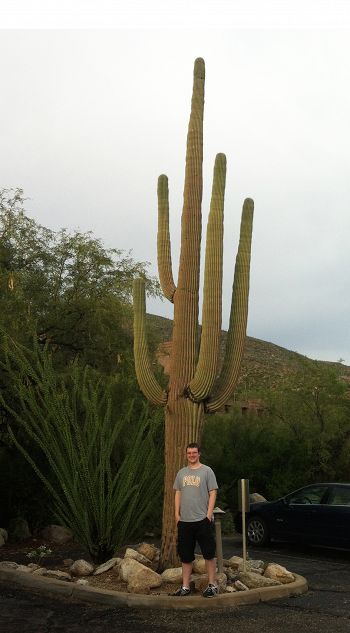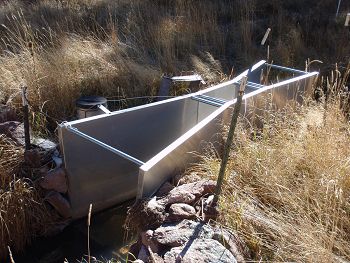Critical Zone Profile - KYLE TROSTLE (geochemist, postdoctoral researcher)
13 Mar 2015
Postdoctoral Researcher; Soil, Water, and Environmental Science; University of Arizona.
The critical zone is responsible for the production of many of the renewable resources that we all depend upon for life, including agricultural soils and clean drinking water. In order to understand how critical zone systems may respond to climatic change, we first need to know how they work under current conditions. I am currently studying the relationship between stream water discharge and stream water chemistry at the Jemez River Basin Santa Catalina Mountains Critical Zone Observatory (JRB-SCM-CZO).
“Clean water is one of the most important natural resources, particularly in the desert Southwest. By understanding the movement of water in the critical zone, we develop a powerful tool for understanding how to manage water resources and determining if these resources are susceptible to climate change.”
– Kyle Trostle
I’m a postdoctoral researcher who is funded through the CZO program, so my job is a direct result of CZO funding. Currently I study the relationship between stream water discharge and stream water chemistry at the Jemez-Catalina CZO. I’m looking forward to attending an upcoming conference on concentration discharge relationships among the different CZO locations.
In many locations stream water chemistry changes very little, even though the volume of stream discharge changes a great deal. I’m trying to figure out the big picture story that these concentration discharge relationships can tell us. For example, if I add more water, will chemical weathering increase? I’m also looking to interpret the details that may be present in the data we collect. For example, when I look at high discharge events like storms, do I see chemical evidence for water moving into the stream from soils instead of from groundwater?
Chemical weathering is important because it produces the soils agriculture depends upon, removes CO2 from the atmosphere on geological timescales, and generates chemical inputs to aquatic systems.
In many places, water strongly limits chemical weathering, which means that an increase in rainfall would increase chemical weathering as well. For each particular chemical, however, the relationship between the concentration of that chemical in the stream water and the volume of discharge of the stream is slightly different. As we look more closely at the details for each chemical, we learn more about where the water has come from and how long it has been there.
Current collection schemes yield many data points for low discharge conditions in streams, but few for high discharge events. This means that our current understanding of concentration discharge relationships may be biased by the relatively few observations made during high discharge conditions. We’re attempting to overcome this by collecting more samples during storm events. In some instances, this means that we have to count on weather forecasts to decide when to collect samples, which can be frustrating!
Developing a better understanding of concentration discharge relationships in streams will help us to make better predictions about weathering, stream water chemistry, and the transport of water through the critical zone if climatic changes occur.
:: By Linda Copman, staff writer ::
Kyle Trostle with saguaro cactus.
A Parshall flume, used for calculating stream water discharges.
Related News
Explore Further







